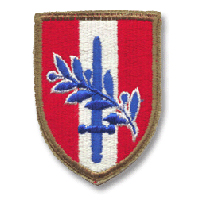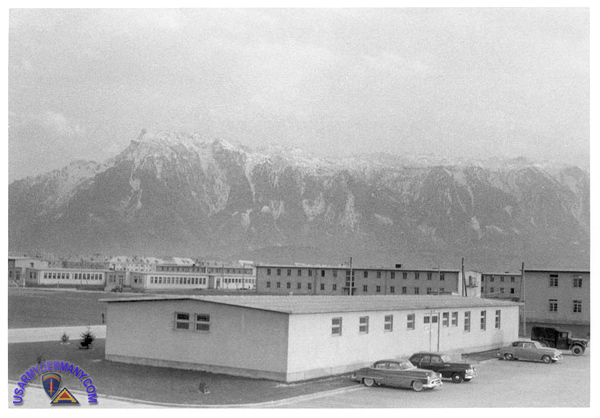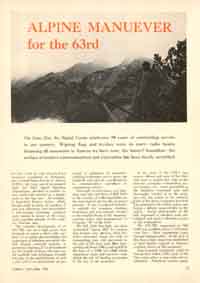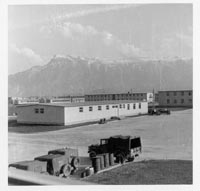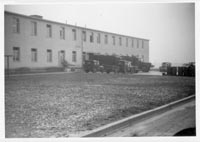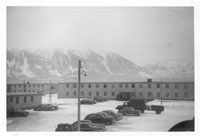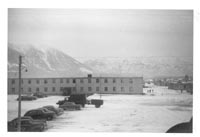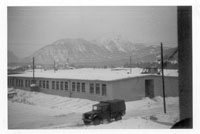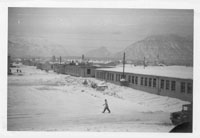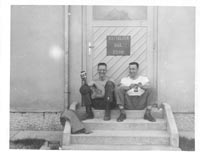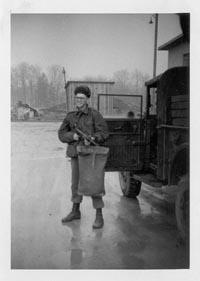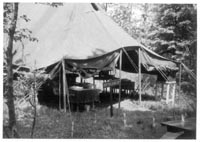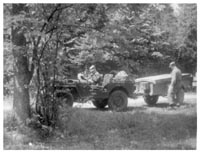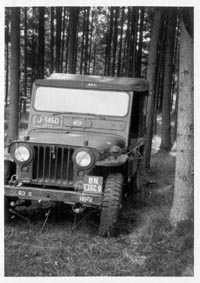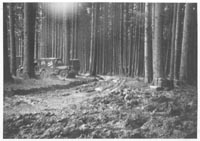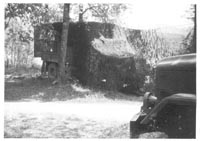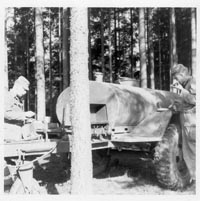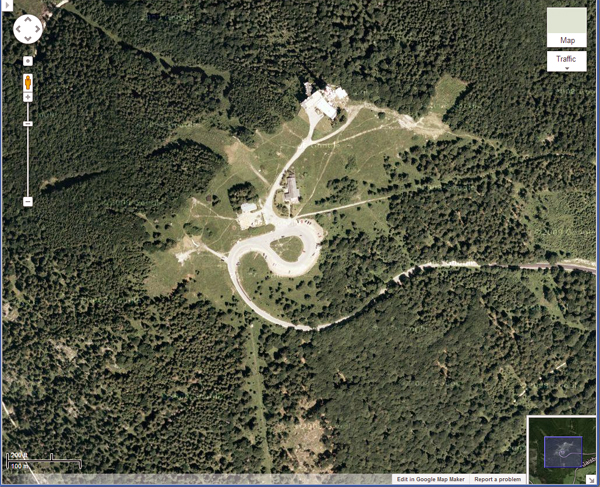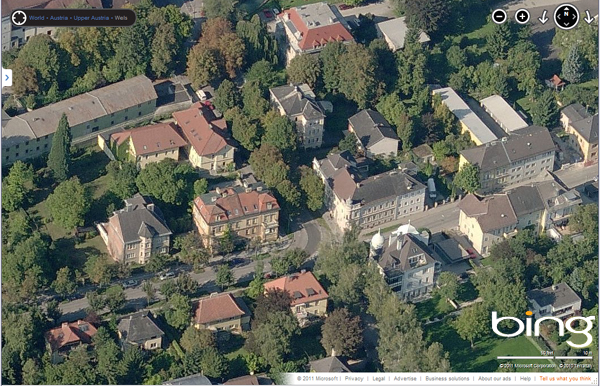| If you do NOT see the Table of Contents frame to the left of this page, then Click here to open 'USArmyGermany' frameset |
||||||||||||||||||||||||
|
||||||||||||||||||||||||
|
|
||||||||||||||||||||||||
|
||||||||||||||||||||||||
|
|
||||||||||||||||||||||||
| 63rd Signal Battalion History | ||||||||||||||||||||||||
|
||||||||||||||||||||||||
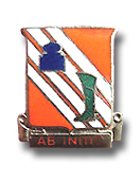 63rd Signal Bn DI 63rd Signal Bn DI |
||||||||||||||||||||||||
| 1947-48 | ||||||||||||||||||||||||
| (Source: "History of the 63rd Signal Operations Battalion" and "Battalion History" supplied by Wilbert G. Shipe, Jr. and the 63rd Signal Battalion web site "http://www.gordon.army.mil/63sig/webpage/battalion/default.html") | ||||||||||||||||||||||||
|
||||||||||||||||||||||||
| 1947 | ||||||||||||||||||||||||
| (Source: Guestbook entry by H.D. Faulkenberry) | ||||||||||||||||||||||||
| I was in the Linz area from March 1947 through January 1950. First at LUAAC Det, Co A,. 63rd Sig Bn. Then with the 541st Sig Co and finally with the 516th Sig Co. When I first arrived there (1947), we were stationed at Ebelsberg (probably at the former SS-Kaserne) outside of Linz. Later we moved to Camp McCauley. For a short time I also worked at the message center in Wels. |
||||||||||||||||||||||||
| 1950 | ||||||||||||||||||||||||
| (Source: Email from Thomas Warren, 63rd Sig bn, Camp Riedenburg and Camp Rum, 1950-55) | ||||||||||||||||||||||||
|
||||||||||||||||||||||||
| 1951 | ||||||||||||||||||||||||
| (Source: Email from Dan Ryan) | ||||||||||||||||||||||||
| I was shipped to USFA in September 1951, - from Camp Kilmer to Bremerhaven to Linz and, after a few days assigned to the 63rd Sig Bn in Salzburg at Camp Truscott. In February, 1952, I was assigned to Vienna Station where I worked in the comcenter for the next year. Early in 1953, I was sent back to Salzburg and assigned to Team C at Camp Reidenburg (later we moved to Roeder). In early 1954, it was time to go "stateside" and I left Livorno for another restful sea voyage back to Kilmer and a return to the rigors of civilian life. Enjoyed very much my tour of duty in USFA - lots of good guys, interesting and quite beautiful country - mostly nice people. I've returned to Austria many times in the past 25 years and I always enjoy my trips "down memory lane". |
||||||||||||||||||||||||
| 1954 | ||||||||||||||||||||||||
| (Source: SIGNAL, Journal of the Armed Forces Communications Association, May-June 1954) | ||||||||||||||||||||||||
|
||||||||||||||||||||||||
| (Source: USFA Sentinel, December 3, 1954) | ||||||||||||||||||||||||
| Ringing Phones, Exploding Bulbs Mark 63d's Job
Ringing telephones, exploding flash bulbs and clacking teletype machines at installations throughout the command all point to the 63rd Sig Bn, which operates and maintains fixed communication facilities. Photography, radio, teletype and telephone are the battalion's main business. Relay stations, maintained by the unit, are located in Salzburg, Linz, Innsbruck and Vienna. The battalion is divided into four companies, and has three attached units. Hq/Hq Co, A, B and C Cos, 258th Sig Co, 7644th STIT and 541st Sig Depot have personnel spread throughout the command as radio operators, linemen, telephone operators, telephone repairmen and teletype operators. Under the direction of Mr Samuel Fisch, Sig Photo Section Chief, the 63rd's lensmen provide photographic coverage, still and motion, ground and aerial, for USFA Hqs, Area Cmd and Tac Cmd. They also supply aerial and motion picture coverage for Vienna and Spt Cmds. Recently a film on Tac Cmd's Mountain Training Center called "USFA Troops Learn Their A B Skills," was used by NBC and Universal News. Other films sent Stateside for processing and possible release to television and newsreel companies covered Vienna guard changeover ceremonies and various honor guards in the command. |
||||||||||||||||||||||||
| 1955 | ||||||||||||||||||||||||
| (Source: STARS & STRIPES, Jan 13, 1955) | ||||||||||||||||||||||||
| All fixed communication facilities in USFA - such as telephone, radio and teletype - fall under the jusrisdiction of the 63rd Sig Bn. The battalion also operates radio relay stations at Salzburg, Linz, Innsbruck and Vienna. In addition, the 63rd provides official photographic coverage for USFA Headquarters and supplies tactical communications when HQ USFA moves into the field. The battalion is divided into four companies and has three signal units attached. |
||||||||||||||||||||||||
| ORGANIZATION (Jan 1955): | ||||||||||||||||||||||||
|
||||||||||||||||||||||||
| The photographic section of the 63rd provides photographic coverage for HQ USFA, Area Command and Tactical Command. The section also provides aerial and motion picture coverage for Vienna and Support Commands. | ||||||||||||||||||||||||
| "C" Company | ||||||||||||||||||||||||
| (Source: Email from John W. Pritchett) | ||||||||||||||||||||||||
| For additional information on John's tour, see his two entries in the USFA Guestbook, dated March 1, 2002. | ||||||||||||||||||||||||
| I was assigned to Company "C" of the 63rd Sig. Bn. My duty station in Salzburg was behind the Winkler Hotel. There was a small building there that received both radio and land line signals. The fixed station transmitter station and a very large antenna field was located near Camp Roeder. The Camp at Castenova di Verona (Webmaster: Castelnuovo del Garda?) was about 16 miles outside of Verona and on the way to Lake Garda. It was a German Army base and storage point during the Second World War. A lot of the buildings had war damage and had not been repaired. When I was assigned I believe they were using transmitters with a nomenclature of 64B. I understand the transmitters we installed were large Naval Units off a battleship. The idea was to skip VHF/UHF off the ionosphere (over the Brenner Pass). We were told there was another test sight in Alaska near Mt. McKinley. We also built and installed four towers and a long line antenna system. We were just a small unit; two officers and five Sgts. Out of 25 to 30 enlisted about 15 of us were with the 63rd. When I left Verona in 1955, the system was working very well. |
||||||||||||||||||||||||
| 258th Signal Construction Company | ||||||||||||||||||||||||
| 1952 | ||||||||||||||||||||||||
| (Source: Email from Roger Damon, 258th Sig Co, 1952-54) | ||||||||||||||||||||||||
| I was in the 258th Construction Co (Signal); 1LT 1952-1954.
Brought platoon from Ft Benning GA in Jan 1952, then joined 63rd Signal BN. The company remained attached to the 63rd SIG Bn during the entire time I was in .
The 258th was an all-black outfit w/Caucasian officers. When I joined the outfit as a platoon leader @ Ft. Benning in Dec 1951, I was surprised to learn it was headed east to Europe, not west to Korea. The 258th was integrated in 1953. My platoon — really good men — was the last to be integrated w/Caucasian replacements. I believe it was the last all-black unit in USFA. I’d taken them from Benning to Salzburg without incident. I came out color-blind. We were stationed initially in the city of Salzburg (Camp Riedenberg). The 63rd didn’t go to Wien, as far as I know. There was another SigCenter there, mostly radio – PW15, PW 40 equipment. Fed our rhombics. We built rhombic antennas on Salzburg’s Gaisberg and at the SigCenter at Camp Roeder, where construction began in 1951. We constantly practiced (pretended WWIII basis) quick cable installation (Spiral 4) following the road networks between 63rd main, adv, and rear CP sites mostly thru Upper Austria as well as Land Salzburg and the Tirol as well as into southern Germany. These followed the probable axes of withdrawal of US Forces in the event WWIII happened. The 350th Inf Regiment, the significant combat force in USFA, likely would have been devoured by the Russians – at least that was the fear. G2 likely never recognized that Russia was devoid of manpower. 63rd’s CO was Maj. Hugh F. Foster Jr, a Point graduate. He got his silver oak leaves in 1956. Worth googling him. A brilliant officer. He conceived the knife edge diffraction theory which overcame the need to install carrier equipment high in the mountains to obviate signal blocking by aiming our antenna arrays (dipole, director, reflector) at the ridge lines in the direction we were going, and getting good signals by doing the same thing several valleys away. After we had both retired, he and his wife visited us here in Vermont twice. Wish I could have gotten a job on his staff when he made BG. He passed away three years ago. Among several weird assignments in Austria (Bn Ski School CO, rock climbing escapades in line of duty – I was a skier/climber in college)— I’ve a zillion stories. Oldest daughter was born in Salzburg – just today sent a birthday card to her that featured the main gate at Camp Truscott. She was born at the 109th Field Hospital, through the gate and down to the right. The rhomobic antennas were used for High Frequency communications. As I recall, one comm site was near what was then the beginning of Camp Roeder, the other was on the large flat summit of the Gaisberg, east of the city of Salzburg. The rhombics were driven by PW-15 and PW-40 transmitters. (What amazed me was that our ordinary 1KW BC-610 transmitters (which were the primary transmitters for our carrier equipment in the 63d’s Radio Co) were used as modulators for the PW (stands for Press Wireless) series. I thought that was a remarkable use for the SCR 399 which was a mainstay of “long range” radios during WWII. (As a newly minted 2LT in 1951, we’d had extensive courses on all the current SCR’s in use, as part of Officer Basic at Ft Monmouth.) We were given precise (i.e., 2 decimal places) magnetic headings to establish the orientation – pretty much WNW – for the long axis of the rhombics. (Later, when I completed pilot training, I understood the Great Circle concept.) I arranged procurement for the very long and heavy wood poles from the Salzburg Postamt, as the issue standards at the signal depot (in Groedig) were for conventional telephone outside plant stuff. We guyed each pole four ways, as the horizontal forces would be significant. The feed end of the antenna faced The East (as we referred to the other side of the border) and, being curious, I was assured “that not very much” radiation would go in that direction. I remembered some of these details after looking through the link I quoted above. 1/LT Jimmy Rose, CO of Radio Co., delighted in taking a spare 4’ fluorescent tube and waving it around the outside of his HO17 (on the bed of a 6x6) when his equipment was on the air. It lit up at full brilliance in his hands. I also remember 1/LT (might have been CPT) Warren Hunsucker’s chagrin at the outcome of ordering a sergeant to take a specific route. He was in the cab of a 6x6 with a new model HO with the newest carrier equipment that had just arrived. It was to be demonstrated to USFA’s Chief Signal Officer in downtown Salzburg. Hunsucker said, “Turn right here, Sergeant.” The sergeant said, “But, Sir . . “ Hunsucker, running late and feeling very pressed for time, said, “Are you disobeying a direct order, Sergeant? I said turn right, here. Now.” “Yes, SIR.” Crunch, @ 30 Kmh. The sergeant suspected that the new model HO17, on the new 6x6 with its high flotation tires, was about a foot higher than the older WWII 6x6 the 63d still had. (The 258 Sig Co had the new vehicles w/high flotation tires, which were near-useless off-road.) The multiple-track railroad underpass, not too far from the Bahnhof, didn’t even quiver. Fortunately for the sergeant there was another EM in the cab that testified as to the conversation. I’d like to think that Hunsucker didn’t draw anywhere near full pay for quite a long time . . . Stayed in for 30. Was COL for last 5-6 years. Retired 1981. Love VT, still skiing. |
||||||||||||||||||||||||
| 541st Signal Depot Company | ||||||||||||||||||||||||
| (Source: STARS & STRIPES, November 15, 1948) | ||||||||||||||||||||||||
| The 541st Signal Service Company operates the Wels Signal Depot which supplies signal equipment for all of Austria. | ||||||||||||||||||||||||
| 1952 | ||||||||||||||||||||||||
| (Source: Email from Leland "Lee" Irvin, 541st Sig Co) | ||||||||||||||||||||||||
| I was assigned to the Maintenance Shop (Wels Signal Depot) under CWO Martin. We had one long building that was once part of a leather tanning/production operation during WWII and quite possibly before. (Detachment A and the Hq 541st were created after we moved our installation in ca. 1952 to Leghorn and Groedig.) My job as a PFC then later SGT, was as a Field Radio Repairman, MOS 648. USFA "requisitioned" a 3-story villa, Volksgartenstrasse 14, which served, as an exception I might add, to the normal GI billeting and messing arrangements anywhere in the world. We had but a short one block walk to work each day and were but 2 blocks from the Service Club and Snack Bar where we also enjoyed our own 2 court tennis facility. I have heard comments that we were the envy of all troops stationed in USFA. The 541st was also involved with a once a year "percentage check" of communications equipment that we, and other Army elements had "stashed" in an old mine/cave near Innsbruck....Camp Rum. This equipment was placed on the evacuation route out of Austria in the event that the Cold War ever got hot.
A couple of us from the 541st were also on temporary duty periodically with the CIC in Linz running direction finding equipment to pinpoint clandestine Communist CW Radio stations that were operating the in the US Zone. We found several but the CIC never let us in on the "killl". We also provided mobile repair vans to Vienna units needing communications repair. We were always in for a hassle by the Soviets at the Enns Bridge near Linz and at the end of the only road through the Soviet sector when we reached the outskirts of Vienna. We billeted with the 63rd Signal Bn. in their spacious, multi-story building on Mariahilferstrasse in downtown Vienna.
I helped with the installation of facilities at Groedig for about 4 months then I was transferred to the Hq unit in Leghorn to finalize the Depot/Maintenance Facility we established in the Port area. I remained in Livorno (Leghorn) until redeployment to the ZI in December 1952.
My nest assignment was with the South Western Signal School in San Luis Obispo, California. |
||||||||||||||||||||||||
| (Source: Email from Leo R. West) | ||||||||||||||||||||||||
| I was a member of the 541st from June of 1952 until August of 1953 and was part of the Mobile Teletype Repair team with monthly trips to Brenner and Innsbruck’s Camp Rum. Captain (the Lt.) Greville was our commander and led a convoy to Leghorn, Italy to replace WWII vehicles which were pretty well worn to. I was part of this trip also. We moved the depot from Wels to Groedig in June of 1952. Many memories of times in the attic of the 63rd Signal at Camp Truscott before the move to Roeder, about a month before I was shipped out. I also served as Pfc.I.C. of Troop I&E. as I had a degree in education. |
||||||||||||||||||||||||
| 1954 | ||||||||||||||||||||||||
| (Source: USFA Sentinel, September 10, 1954) | ||||||||||||||||||||||||
| USFA Signal Supply Point
"Mobile" and "independent" are the labels which best describe the USFA Signal Supply Point at Grödig. When a teletype machine at Brenner Pass starts printing garbled messages, a team is dispatched almost immediately to make the necessary repairs. The organization also maintains similar emergency service for units using radio, radar and other electronic equipment. Military personnel working at Grödig are members of the 541st Sig Co (Depot). They are commanded by Capt. Martin R. Preville, who is also in charge of all supply point operations. The men are billeted and mess at Camp Roeder, but the orderly room and all other company facilities are at Grödig. The unit maintains its own motor pool there. When it moved from Wels two and a half years ago, it found that its assets amounted to only two large buildings. Members of the company went to work putting in partitions, making offices, painting signs and setting up electrical circuits. With the exception of the Signal Depot at Leghorn, the 541st is the highest echelon of signal supply and maintenance in the command. The only camera and movie projector repair point in USFA is at Grödig. The projector section conducts 36 classes a year throughout the Austrian command. Captain Preville estimates that 15 of his men are traveling continually. Some are making service calls throughout USFA. Others are conducting projectionists schools. Three or four men are inspecting signal equipment throughout the command. Passes are issued by MOS because men from each section must be on call 24 hours a day. When the mobile teams are not on the road, they service their own equipment and replenish the supply drawers of the trucks. Preville uses the inspection team to check his own company. "We don't want anybody to find us guilty of the very same things we criticize elsewhere in the command," he says. |
||||||||||||||||||||||||
| Related Links: |
||||||||||||||||||||||||
